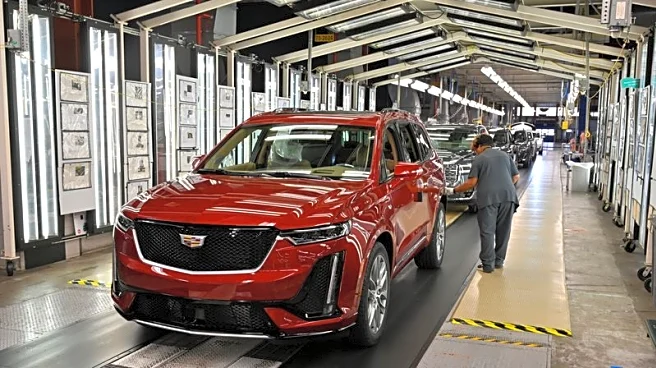What is the story about?
What's Happening?
President Trump is contemplating a plan to provide tariff relief to automakers that manufacture or assemble most of their vehicles in the United States. This initiative aims to incentivize companies to hire U.S. workers and maintain local production. The proposal could benefit major automakers like Ford, General Motors, Tesla, Toyota, and Honda, which already have significant assembly operations in the country. The current import offset offered by the Commerce Department is 3.75% of a car's retail price for U.S.-assembled models, set to decrease to 2.5% after April 2026. However, Trump is considering maintaining the higher rate for five years and possibly extending it to cover U.S.-made engines. This move has already positively impacted the stock market, with Ford, Stellantis, and General Motors seeing stock price increases.
Why It's Important?
The proposed tariff relief could significantly impact the U.S. automotive industry by reducing production costs and improving profit margins for companies with strong American assembly lines. This aligns with Trump's trade strategy to encourage local manufacturing and could lead to increased domestic production. The plan also addresses the 25% tariffs imposed on imported vehicles and parts, which have been a financial burden on automakers. If implemented, the policy could further incentivize global automakers to expand their U.S. operations, potentially boosting the economy and creating more jobs. However, the plan's success depends on its finalization and the extent of its coverage, particularly concerning steel and aluminum imports.
What's Next?
The administration is still reviewing the economic effects of the proposed tariff relief, and a decision on heavy-duty truck tariffs has been delayed. The White House has not confirmed whether the relief will include steel and aluminum, which are significant components of car parts. Automakers and investors are closely monitoring the situation, as the policy's finalization could lead to strategic shifts in production and investment decisions. The outcome will also influence trade negotiations with international partners, as the U.S. seeks to balance domestic interests with global trade commitments.
AI Generated Content
Do you find this article useful?














